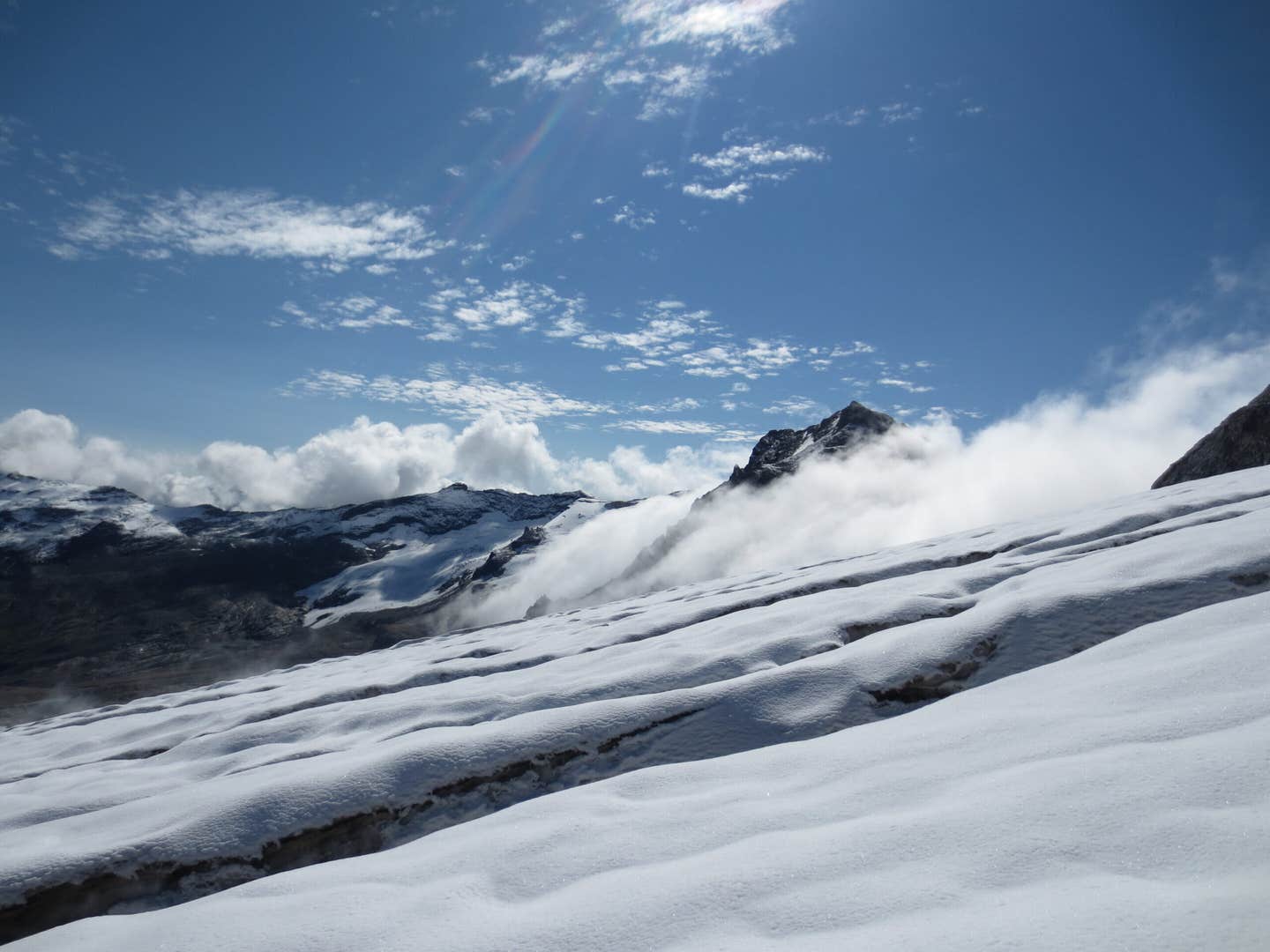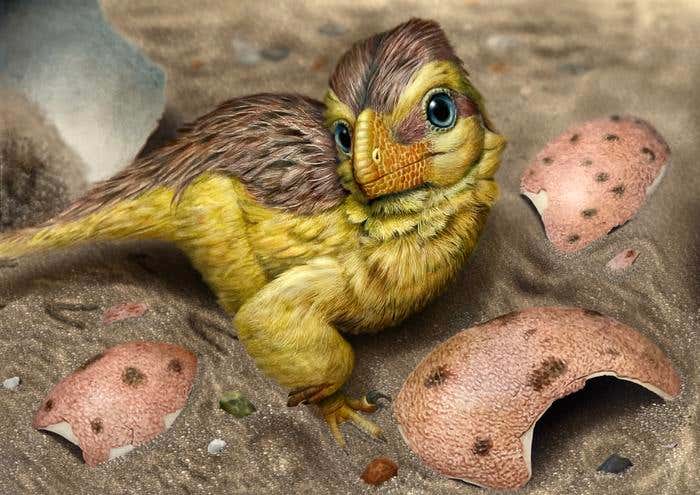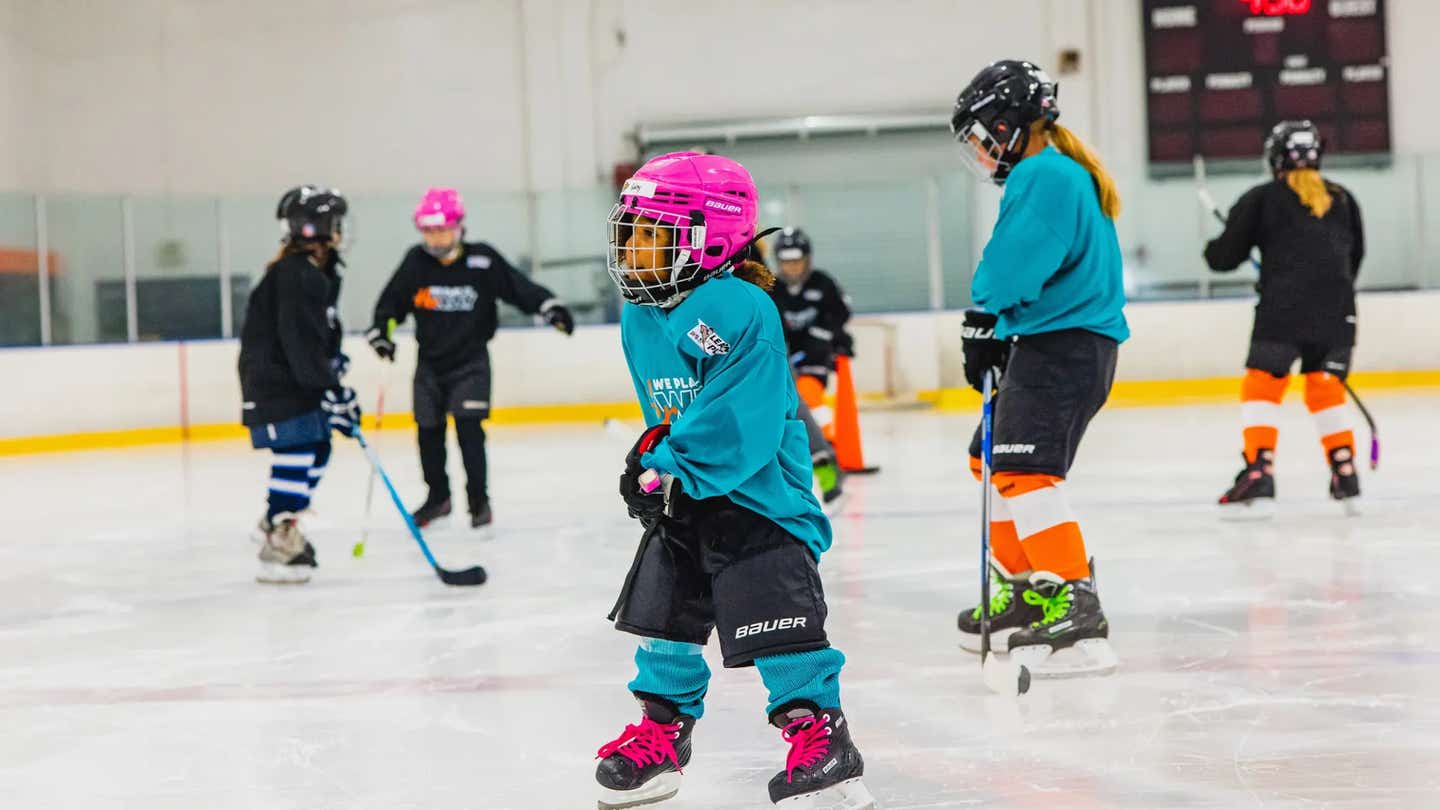Glaciers are keeping themselves from melting — but not for long
Glaciers’ self-cooling effect is fading, new research shows, signaling faster melting and urgent need for adaptation.

A sweeping global study reveals that glaciers’ ability to stay cooler than the surrounding air is fading. (CREDIT: Thomas Shaw | ISTA)
High in the mountains, glaciers once kept their cool—literally. The massive ice bodies create their own cold microclimates that retard melting even as the rest of the planet warms.
But an exhaustive new global study by researchers at the Institute of Science and Technology Austria (ISTA) reveals that this natural safeguard is starting to break down. By midcentury, glaciers can lose their capacity to remain cooler than the air around them, leaving them to quicker melting and a prospect of expanding retreat.
A World Perspective on the Glaciers' "Cool Trick"
The research examined a remarkable trove of data: 3.7 million hourly temperature readings from 350 automatic weather stations spread across 62 glaciers on nearly every continent. The project, led by postdoctoral researcher Thomas Shaw in Francesca Pellicciotti’s group at ISTA, sought to understand how glaciers maintain what scientists call “temperature decoupling.”
Temperature decoupling results when air over a glacier surface is cooler than the surrounding atmosphere. This contrast produces a microclimate cold zone—a form of air-conditioning created naturally. Glacier air was on average 1.63 degrees Celsius colder than nearby air, though that difference varied incredibly based on glacier size, shape, and surroundings.
The team also calculated how much the air from a glacier warms up for each degree rise in ambient temperature, a calculation referred to as the "decoupling factor." Globally, the mean was 0.83, meaning that glaciers warmed approximately 83% as much as the air—an indication they still hold back some heat. But the scientists found that this insulation will be temporary.
When the Ice Fights Back
To collect the information, Shaw and his colleagues combined new readings with historical records and even unpublished data of other researchers. The result was one of the most complete analyses of glacier surface temperatures ever done.
Shaw recalled going on a field trip in August of 2022, standing atop the Glacier de Corbassière in the Swiss Alps under a brilliant blue sky and a modest 17 degrees Celsius. "The warmer the climate becomes, the more it will cool its own microclimate and local environments down-valley," he explained. "But only temporarily."
Pellicciotti described that the same occurs on the giant Himalayan glaciers, where cold, dense air descends down the slopes in "katabatic winds," chilling valleys below. The same occurs on much of the world's larger glaciers, illustrating nature's own opposition to heating temperatures.
The Limits of a Natural Shield
The glacial cooling force depends on several factors. Longer glaciers tend to have larger decoupling effects since they have more surface area for cold air to form over. Debris, however—rocks and sediment above the ice—undermines this shelter because it retains heat. Wind and wet air erode the microclimate and bring warmer air into the glacier's boundary layer.
From the statistical models, the scientists were able to explain approximately 60% of worldwide variation in the behavior of glacier cooling. There were clear geographic patterns within the results. In warmer, wetter climates such as the South and East Asian regions, glaciers experienced stronger decoupling. The effect was much weaker at drier high-altitude sites like central Andes.
Climate projections predict the following decades to be the time when glaciers' ability to cool themselves would peak. The ISTA scientists put the time between the 2020s and 2040s as when the "peak decoupling" of glaciers will occur. After that, as ice volumes reduce and surfaces are broken, the cooling effect will cease to exist.
Why It Matters
Under moderate warming (the SSP 2-4.5 scenario), the difference between glacier air and air around it might reduce to as little as 0.31 degrees Celsius by the end of the 21st century. Under high emissions (SSP 5-8.5), this drops to 0.17 degrees. In both cases, glaciers effectively "recouple" with the atmosphere, losing their microclimate shield and warming almost in step with the surroundings.
"And by then, the deteriorated and considerably more dilapidated glaciers will 'recouple' with the ever-warming atmosphere, sentencing them to be extinct," Shaw added.
This shift has the power to transform the way scientists model glacier melting and water runoff. Past models have assumed a simple one-to-one relationship between ice melting and air temperature, but this study shows that correlation is not constant. Glaciers can melt slowly compared to expectations at the beginning of a couple of decades because of cooling effects. After a while, when recoupling is established, they could melt much faster.
The implications are widespread. Many mountain cultures rely on glaciers' meltwater to supply rivers in summer droughs. When glaciers recouple and retreat, water supplies could fluctuate more drastically, affecting agriculture, hydroelectric power, and drinking water. Smaller glaciers and debris-covered ones are particularly susceptible, as they lose their microclimates first.
Accepting the Loss—and Acting on It
While the outcome is grim, Shaw and Pellicciotti see practical reasons for closely studying these processes. "To know that self-cooling of the glaciers will continue a little bit longer might provide us with some extra time to make the most of our water management strategy in the next decades," Shaw said.
Still, he warns against wishful thinking. "We must accept the devoted ice loss and concentrate all our energies on avoiding further climatic warming rather than on futile geo-engineering means such as cloud seeding and glacial covering," he continued. "These are akin to using an expensive Band-Aid on a bullet wound."
The community calls for increased international cooperation in emissions reduction and more smarter local adaptation strategies. Future scientists, they argue, must make glacier models better by incorporating changing decoupling effects with the passage of time rather than a uniform rate of melting.
Practical Implications of the Research
This study rewrites scientists' and policymakers' understanding of how glaciers respond to global warming. In demonstrating that glaciers have a short "self-cooling window," it emphasizes the importance of acting before that buffer is gone. For scientists, it offers a precious new dataset to sharpen models of glacier melt, hydrology, and regional weather patterns.
For cultures dependent on glacier-run rivers—both the Andes and the Himalayas—the findings may imply fresh storage and conservancy options for water. It is also a reminder that resilience short-term is not the same as stability long-term. When glaciers lose their glacial margin, which chills the snow resting above them, cultures will need to adjust to more erratic water flows, dwindling snowpacks, and more glacial lake flood or landslide hazards.
Finally, the study has this clear message: human beings have time to adapt and avoid doing further damage, but that window of opportunity is shutting as fast as the ice itself.
Research findings are available online in the journal Nature Climate Change.
Related Stories
- Rising temperatures and widespread pollution are making glaciers melt at record rates, study finds
- New climate models reveal rapid glacier melt in Patagonia - here's why that matters
- Melting ice age glaciers triggered surprising changes deep within Earth
Like these kind of feel good stories? Get The Brighter Side of News' newsletter.
Rebecca Shavit
Science & Technology Journalist | Innovation Storyteller
Based in Los Angeles, Rebecca Shavit is a dedicated science and technology journalist who writes for The Brighter Side of News, an online publication committed to highlighting positive and transformative stories from around the world. With a passion for uncovering groundbreaking discoveries and innovations, she brings to light the scientific advancements shaping a better future. Her reporting spans a wide range of topics, from cutting-edge medical breakthroughs and artificial intelligence to green technology and space exploration. With a keen ability to translate complex concepts into engaging and accessible stories, she makes science and innovation relatable to a broad audience.



